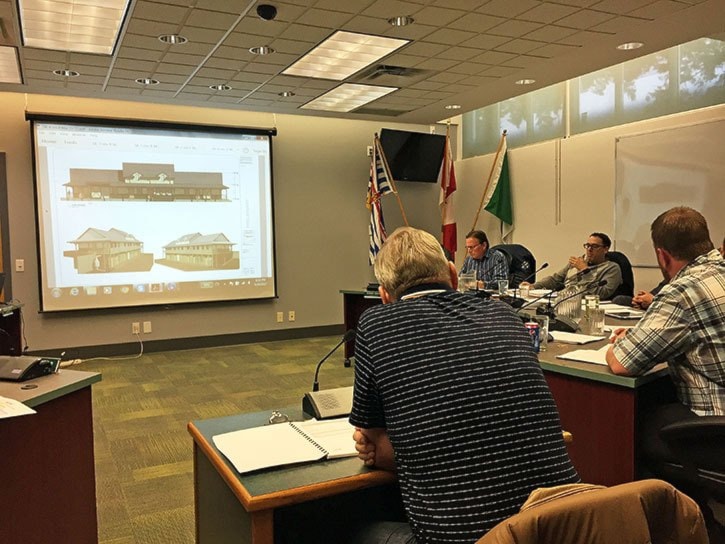The cost consultant responsible for giving an estimate for the renovations and repairs to Station House has given an estimate — $1.93 million.
The figure, given at the April 10 committee of the whole meeting, breaks down to $1.32 million for the building, $275,000 for the site, $91,000 for ancillary costs and $250,000 for contingency funds. In addition, should the District of Hope want fire suppression systems installed, likely including sprinklers, they need to prepare an extra $75,000.
However, some council members find the figures quoted extreme.
“I went through it and, I'm not in construction, but I feel like I'm smart enough to see some things to shock me,” said Coun. Scott Medlock. “I think there are a lot of things here that are out of line. I think it's a high estimate.”
Medlock pointed to the $10,000 budgeted for upper and lower kitchen cabinets, $2,200 for a stainless steel fridge, and ceramic wall tiling for the washrooms. He said these need to get “kicked down a big notch.”
“These are the things that add up to hundreds of thousands of dollars that we don't have, right?” said Medlock. “My wife would love for $10,000 worth of cabinets in her kitchen, but she's not going to get that.
“This is for staff use. It's not a commercial kitchen.”
Upon Medlock’s probing, architect Geoff Lawlor said they could remove the ceramic tiling as long as they kept the required degree of impervious wall finishing.
Coun. Bob Erickson also pointed to the $100,000 budgeted for the roof, which he estimates would cost a lot less to do. The roof is not in a state of disrepair.
Mayor Wilfried Vicktor also noted that the estimate represents a “Cadillac version of what we could do,” but it does not take into account the limited funds facing the District.
“It's a pretty penny, so we're going to have to look at all possible options that don't involve spending that much.”
The discussion also went into how to manage the project. Eventually, council decided to move forward by tasking staff to find out how they can do the project in phases, with goals such as putting a cost on making the building occupancy ready, cleaning up the exterior, and also consulting with finance director Dale Courtice on how much of their reserves they can use.
A report will come out in future council meetings, likely the next one or the one after the next.
Coun. Donna Kropp opposed this motion because she felt that it lacked a dollar figure attached to it which would “put a cap on the money, the bleed.”
“At some point, we have to say how much we expect the taxpayers, for the value of the volunteers and the history, to pay, to continue the project,” said Kropp.
Councillors Medlock, Gerry Dyble and Dusty Smith highlighted the importance of valuing the volunteers' past efforts and history of the Station House, in light of Erickson's suggestion to build new building rather than renovating Station House.
“I don't want to waste another cent,” said Erickson. “I think we can build new for a lot less and we can make it exactly the same.”
Erickson reiterated his idea of tendering the project to three contractors, so that council could dictate costs and timelines.
Both Medlock and Smith argued against building a new building because of the value of the Station House's history. Furthermore, they argued that volunteers will only support a renovation, not building a new one, hence elevating costs for a new construction.
Architect Geoff Lawlor believes that building a new building would cost more than renovating. He said the renovation would cost 80-90 per cent of the cost of a new building, although he suggested it could be better because of current issues with the poor location access.
He also said tendering to a general contractor would result in similar prices to the report.
The District could hire a construction manager who could negotiate with tradespeople, bringing in an estimated five-per-cent savings.
Volunteers could increase savings to 10 per cent if they involve skilled tradespeople into the project with limited pay.
